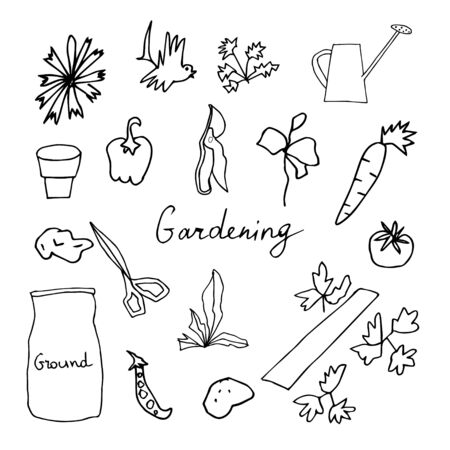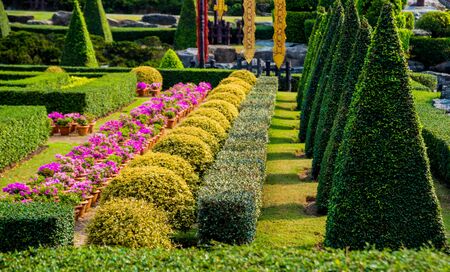Understanding the Essence of an English Cottage Garden
To truly embrace the design principles behind an authentic English cottage garden, one must first appreciate its origins and unique character. The quintessential cottage garden harks back to rural England, where practical necessity and a love for natural beauty shaped its informal style. Traditionally, these gardens were tended by cottagers—village folk who grew flowers, herbs, and vegetables side by side in small plots just outside their doorsteps. Over time, what began as a means to supplement the household larder evolved into a charming blend of colour, texture, and scent that feels both spontaneous and deeply nostalgic.
The enduring appeal of an English cottage garden lies in its relaxed and unpretentious atmosphere. Unlike the meticulously clipped borders of formal gardens, the cottage style is marked by a sense of abundance and gentle disorder. Plants spill over pathways, roses clamber up weathered trellises, and self-seeded foxgloves pop up wherever they please. There is a certain romance in this controlled chaos—a nod to simpler times when gardens were spaces for both work and quiet enjoyment. Today, recreating such a setting involves more than just choosing the right plants; it’s about capturing that spirit of rural simplicity and weaving it through every aspect of your outdoor space.
Choosing Traditional British Plants
If you want to create an authentic English cottage garden, your plant choices must echo the timeless beauty found in gardens across the UK. There’s a certain charm in selecting classic cottage plants—those that have graced village plots and manor house borders for generations. The secret lies not only in picking beautiful blooms but also in choosing varieties that thrive in our sometimes unpredictable British weather.
Classic Cottage Garden Favourites
When I think back to my grandmother’s garden, it was never about formal structure but rather a harmonious jumble of flowers, each with its own story. Some of the most cherished plants include foxgloves, hollyhocks, and traditional English roses. These are more than just flowers; they are living memories, linking us to the gardeners who came before.
Best-loved Varieties for UK Gardens
| Plant | Recommended Varieties | Main Flowering Season | Notes on Growing |
|---|---|---|---|
| Foxglove (Digitalis) | Excelsior Group, Alba | Late spring to early summer | Thrives in partial shade; self-seeds readily for natural drifts |
| Hollyhock (Alcea rosea) | Nigra, Chaters Double | Summer | Loves full sun and shelter from wind; may need staking |
| English Rose (Rosa) | Gertrude Jekyll, The Generous Gardener | Early summer to autumn | Prefer well-drained soil; regular deadheading encourages repeat blooms |
| Lavender (Lavandula angustifolia) | Hidcote, Munstead | Mid to late summer | Drought-tolerant; perfect for edging paths and borders |
| Pinks (Dianthus) | Mrs Sinkins, Grans Favourite | Late spring to summer | Scented, low-growing, ideal for front of borders or old stone walls |
Blending Tradition with Practicality
A true English cottage garden is as much about resilience as it is about romance. Choose hardy perennials and self-seeders that can cope with the damp winters and occasional dry spells that typify our climate. Embrace local varieties—many nurseries now offer heritage strains bred specifically for UK conditions. It’s wise to mix heights and textures: let tall spires of foxglove peek over mounds of pinks or lavender, while roses scramble through the middle. In this way, every corner tells a story and there’s always something new coming into bloom, just as it should be in a proper British garden.

3. Planting Techniques and Layout
If you’ve ever wandered through a true English cottage garden, you’ll know that its charm lies in the way plants seem to tumble together in a cheerful, natural jumble—yet there’s method in this apparent madness. The secret lies in layered, naturalistic planting that balances a sense of wildness with just enough order to avoid chaos. To achieve this look, start by adopting informal borders. Forget rigid lines and geometric shapes; instead, let your flower beds curve gently and allow your plants to spill over edges or weave into pathways.
Layering for Depth and Interest
When it comes to planting, think in layers. Place taller species like hollyhocks or delphiniums towards the back or centre (if your bed is island-style), with medium-height flowers such as foxgloves and lupins in the middle, and low-growing favourites like lady’s mantle or geraniums at the front. This not only ensures every plant gets its moment in the sun but also creates depth and visual intrigue—a hallmark of authentic cottage gardens.
Mixed Heights and Drifts
Don’t be afraid to mix heights within a single area. Allow some tall spires to pop up unexpectedly among lower mounds; nature rarely grows in strict tiers, after all. Plant in generous drifts or clumps rather than isolated specimens—think three, five, or seven of the same variety together—so colours and textures flow naturally across your borders. This approach not only mimics how wildflowers grow but also makes for easier maintenance.
The Balance Between Order and Wildness
A key principle is maintaining the right balance between order and wildness. While you want an overall sense of abundance and spontaneity, a little planning goes a long way. Anchor your design with a few evergreen shrubs or neatly clipped box hedges for structure amid the exuberance. Then fill spaces with self-seeding annuals and perennials—let them pop up where they please for that quintessentially carefree English look. In essence, embrace the unpredictability while gently guiding it; this is what gives a cottage garden its timeless appeal.
4. Including Personal Touches and Quirky Features
If there’s one thing that truly sets an authentic English cottage garden apart, it’s the personality woven into every nook and cranny. The beauty of these gardens lies not just in their riotous planting but also in the stories told by unique ornaments, weathered furniture, and recycled treasures scattered throughout. As with much of British life, a sense of character and gentle eccentricity is heartily welcomed.
Highlighting Character with Personal Additions
Unlike modern show gardens, a traditional cottage garden should never feel staged or overly polished. Instead, it thrives on individuality—a well-loved bench showing its age, an old watering can repurposed as a planter, or a collection of mismatched pots gathered over the years. These touches invite visitors to linger and let their imagination wander.
Classic British Features
To capture that quintessentially English spirit, consider incorporating the following:
| Feature | Description | British Garden Tradition |
|---|---|---|
| Stone Paths | Winding paths made from local stone or reclaimed flagstones | A staple of country gardens, guiding you through abundant borders |
| Rustic Arbours | Trellised wooden structures draped with roses or honeysuckle | Offer both structure and romantic seating spots |
| Weathered Furniture | Old wooden benches, wrought iron chairs, or tables with peeling paint | Adds a lived-in feel; perfect for a cuppa outdoors |
| Recycled Elements | Repurposed tools, containers, or even broken pottery as edging | Reflects the British knack for resourcefulness and thriftiness |
| Quirky Ornaments | Ceramic gnomes, birdbaths, or hand-painted signs | Lends playful charm and tells your own story |
The Value of Eccentric Details
A true cottage garden is never complete without a few surprises—a teapot nestled among foxgloves, perhaps, or an old bicycle entwined with sweet peas. These elements spark conversation and nostalgia, echoing generations of British gardeners who have always made do with what they had while adding their own signature flourish. Remember: it’s not about perfection but about warmth, history, and personality. By blending traditional features with your quirkiest finds, you’ll create a space that’s unmistakably yours—full of charm, stories, and good old-fashioned British whimsy.
5. Encouraging Wildlife and Sustainability
If there’s one thing that truly brings the spirit of a traditional English cottage garden to life, it is the harmonious relationship between the garden and its wildlife visitors. A genuine cottage garden isn’t just about flowers and pretty borders; it’s a living, breathing space where bees hum, butterflies flutter, and birds find sanctuary. To create such an environment, thoughtful planting is key—selecting flowers and shrubs that naturally attract pollinators should be at the heart of your design.
Wildlife-Friendly Planting
Emphasising plants like foxgloves, lavender, and buddleia will invite bees and butterflies in their droves, while native hedgerows or wild roses offer shelter for birds and small mammals. Remember, native species are always preferable as they’re well adapted to our local climate and provide the right resources for indigenous wildlife. The old-fashioned honesty (Lunaria annua), cowslips, and primroses don’t just add nostalgic charm—they also support our native insects in ways imported plants rarely do.
Sustainable Gardening Practices
Cottage gardens have long been synonymous with sustainability, often born out of necessity by those who tended them through generations past. Composting kitchen waste, collecting rainwater in butts, and using natural mulches all help maintain healthy soil while reducing reliance on chemicals. Resist the urge to keep things overly tidy: leave seed heads standing through winter for birds to feed upon, and let corners grow a little wild to offer safe havens for hedgehogs or frogs.
Creating Balance for Generations
By weaving together wildlife-friendly planting with sustainable practices, you’re not only crafting a beautiful garden but also ensuring its health for years to come. This is the true essence of the English cottage garden—a patchwork of colour, scent, and life where every creature has its part to play. It’s a time-honoured approach that respects both nature and tradition, giving back as much as it takes from this green and pleasant land.
6. Seasonal Care and Old-fashioned Wisdom
One of the truest secrets to maintaining an authentic English cottage garden lies in the rhythm of seasonal care, guided by timeless wisdom passed down through generations. While designing your garden is a joy, nurturing it throughout the year calls for a blend of patience, observation, and gentle hands—qualities cherished by British gardeners since time immemorial.
Spring: The Time to Awaken
As winter recedes and the first snowdrops emerge, it’s time for a thorough tidy-up. Clear away fallen leaves, prune back dead stems, and divide perennials that have grown unruly. Traditional advice suggests sowing hardy annuals directly into the soil for a naturalistic look—think love-in-a-mist or cornflowers. Give roses their annual prune now; as my old neighbour used to say, “Prune when the forsythia blooms.”
Summer: Gentle Encouragement
With borders bursting into life, summer is about guiding growth rather than controlling it. Deadhead faded flowers regularly to encourage more blooms—an age-old tip that keeps displays colourful until autumn. Water deeply during dry spells but avoid overwatering; British gardens thrive on moderation. Don’t forget to stake tall delphiniums and hollyhocks before they flop in summer breezes—a trick every seasoned gardener swears by.
Autumn: Preparing for Rest
When leaves turn gold, it’s time to gather seeds from poppies and foxgloves for next year’s sowing—a thrifty practice favoured by cottage gardeners across England. Cut back spent perennials but leave seedheads on some plants like teasels or echinacea for winter interest and to feed the birds. Dig in well-rotted manure or leaf mould as you tidy beds, echoing the age-old mantra: “Feed the soil, not just the plants.”
Winter: A Season for Reflection
Winter needn’t be idle. Use this quieter period to mend fences, clean tools, and plan next year’s plantings by the fireside with a cuppa in hand—just as generations before have done. Protect tender plants with fleece or cloches and mulch around crowns to guard against frost. Old-timers recommend leaving some areas undisturbed for wildlife shelter; after all, a true cottage garden welcomes all creatures great and small.
A Few Words of Wisdom
The heart of cottage gardening lies in working with nature rather than against it. Observe your patch daily—“the best fertiliser is the gardener’s shadow,” as they say. Embrace imperfection: self-seeded surprises and a little wildness are part of the charm. With steady care rooted in tradition, your English cottage garden will reward you season after season, just as it has done for countless British gardeners before you.


